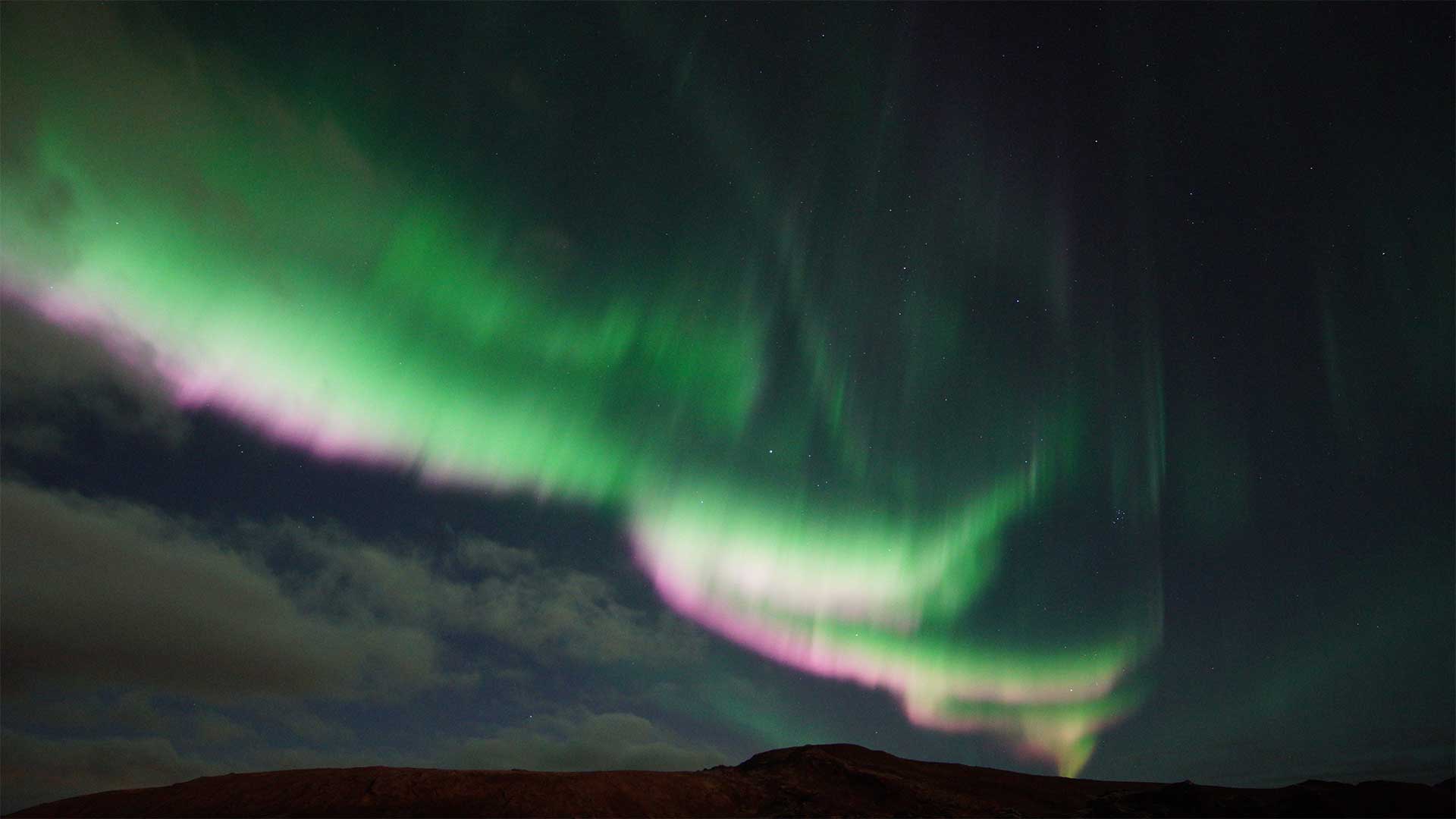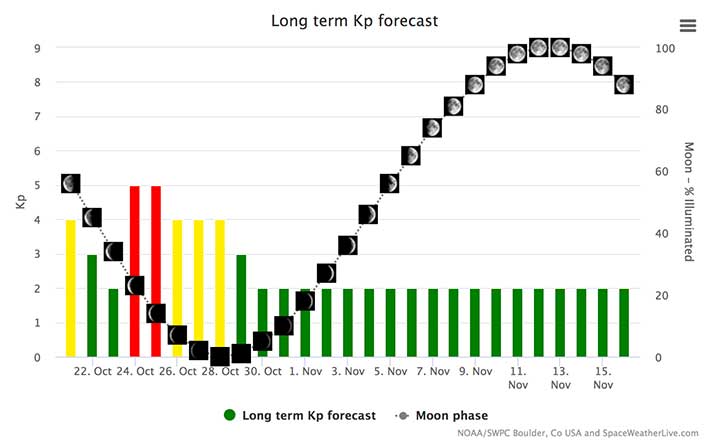
Aurora Forecast in Iceland now
Updated at 14:20, 19. March 2020
We will resume the text analysis Aurora Forecast in Iceland Now next season. Below we give an explanation of all the deciding factors for a Northern Lights sighting and what to look for in a forecast. For a long term forecast scroll all the way to the bottom.
Aurora Forecast in Iceland Now
You will always see the updated forecast on our front page: www.auroraforecast.is
Bear in mind that a forecast is a forecast, not a sneak peek into future. A forecast can change and it can be inaccurate. Always review the newest weather data and driving conditions before heading out on your Northern Lights hunt for the evening.
If you are in the capital area we recommend a visit to these Aurora facilities:
- Aurora Basecamp:Northern Lights Observatory, with a real-time simulation
- Aurora Reykjavik: Information Center, with virtual reality Northern Lights
- Perlan: Áróra, Northern Lights Planetarium Show
Read on to familiarise yourself with the elaborate world of forecasting a successful sighting of Northern Lights:
How to read the Aurora Forecast in Iceland Now
Northern Lights Activity
Geomagnetic activity is forecast on a Kp scale of 0-9. This is not a probability scale, but a forecast of how high on the sky activity is expected to reach. Rarely does activity go over 3, very rarely over 5 and almost never does it go to 8 or 9. Due to the location of Iceland, right under the Aurora oval, we can see the whole range of Aurora activity!
Simply put, if the sky is completely dark and clear of clouds a K-0 activity will be seen low on the northern sky. K-4/5 is overhead, and anything above will be seen towards the southern sky. More on the Kp scale here.
Cloud Cover
The single most important deciding factor for a successful Northern Lights sighting is the cloud cover, because clouds can block even the most vivid Auroras. Incidentally, forecasting cloud cover is very difficult. Never take cloud cover forecasts literally, always evaluate them alongside satellite images and your own observations.
On the front page you will find the satellite images and colourful cloud cover forecasts. Where there is no colour the sky is forecast to be clear of clouds.
Purple: low level clouds
Orange/red: mid level clouds
Green: high level clouds
Low and mid level clouds are the biggest concern. High level clouds can be thin and, especially with strong activity, Auroras can often be seen through them. Learn more about using the cloud cover forecast here.
Moon Light Pollution
Annoyingly for Aurora hunters, moonlight is in itself a light pollutant and can wash out mild Auroras if it’s bright enough. Also, high clouds are likely to suck up bright moonlight becoming a cover of white light, blocking visibility of Northern Lights.
Ironically, October’s full moon is commonly known as Hunter’s Moon. Whereas a Northern Lights hunter’s moon would be a No Moon.
What time are the Northern Lights most likely to appear?
Lady Aurora can do her dance day or night. Basically, as long as you have darkness and at least a partly clear sky you have a fair shot at seeing some of her awesome moves. Once she stops don’t be fooled as she can re-appear just as fast as she disappears. If you are a fanatic, get an app to wake you up with an alert when the lights start moving. We recommend Live Aurora Network. Then you can wake up to a 5am alert (for example), if that’s when Aurora decides to show up, and hopefully the display lasts long enough for you to leg it out of the house in your jammies!
Should you join a tour or go on your own?
If seeing the Northern Lights is your priority, and you are here for only a few days, we recommend you maximise your chance by joining a Northern Lights tour. A professional guide has the knowledge and experience you probably don’t. They will know all the best viewing spots. They will explain the amazing science behind this natural phenomena along with entertaining folklore stories and myths. Some will even point out other fascinating objects on the sky; planets, constellations and starsigns. And some will take your photo under the Northern Lights. There is a variety of tour options to choose from and we cover their pro’s and con’s in this blog.
If you are happy reading the weather and are confident to venture out on your own, always check the Safe Travel and Safe websites first as it can be tricky driving on Icelandic roads in winter. Once on the road in search for a clear sky, your best tool is the Satellite Clouds image. Park safely off the road while you browse the website or have a friend do that. When you find a clear sky there is no need to look further, now you start waiting. The Auroras can happen as quickly as lightning. Keep your eyes peeled. Also, make sure you don’t have anything blocking your view towards North, like a big mountain.
Long Term Aurora Forecast

Are you planning your vacation in advance around seeing the Aurora? Check out the long term forecast at SpaceWeatherLive.com. You can’t rely on it 100%, any more than any other forecast, and there is no way to forecast the cloud cover in advance, but it may help you choose the date for your holiday Northern Lights hunt in Iceland. Then cross your fingers for the clouds to disappear!
Happy Aurora Hunting!
We hope this helps, but remember a forecast is a forecast, not a sneak peek into future. A forecast can change, and it can be inaccurate. Always review the newest weather data before heading out on your Northern Lights hunt for the evening.
We’d love to see how you get on. Tag us in your photos on Instagram: aurora_forecast_iceland and on Facebook: Aurora Forecast Iceland. Here’s a handy guide on How to Photograph Northern Lights.
Thank you to Happyworld Iceland Northern Lights Hunters for the featured image in this article!

